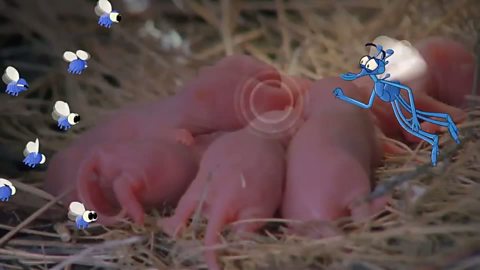How do animals sense changes in temperature?
Video - How animals respond to temperature changes
In this video, learn how different animals sense changes in temperature using abilities like infraredA type of energy that we can't see but that we feel as heat. Some animals are very good at detecting infrared. detection.
Find out how different animals respond to changes in temperature.
Gather round please children. We’ve come to the forest to learn about how animals respond to temperature, and I’d like to start by pointing out this rather interesting insect…
This is the fire-chaser beetle. Fire chasers only lay their eggs in freshly burnt trees, so while most animals run away from forest fires, this beetle actually goes towards them.
It has pits below its middle legs with special sensing cells that can detect infrared radiation.
Infrared is a kind of energy that’s all around us, that most animals can’t see, but only feel as heat.
Fire chasers are so sensitive to infrared that they can detect a forest fire from miles away.
Here’s another animal that’s especially good at detecting heat: the pit viper.
It’s called a pit viper because it has special pit organs between its eyes and the nostrils on either side of its head that can detect infrared heat from animals’ bodies. This helps it hunt its prey, especially at night when it’s that much harder to see.
The pit organs respond to even tiny changes in temperature, which tells the snake in what direction and at what distance away its dinner might be.
Another heat-seeking animal is the vampire bat, which has an infrared detector in its face that helps it locate warm-blooded animals.
Once it’s close to an animal, a bat can even detect slight changes in infrared, allowing it to find a vein full of blood to feast upon.
Don't get too close now children…
Ahh, it’s alive!
Quiz
More on Living things
Find out more by working through a topic
- count11 of 36

- count12 of 36

- count13 of 36
